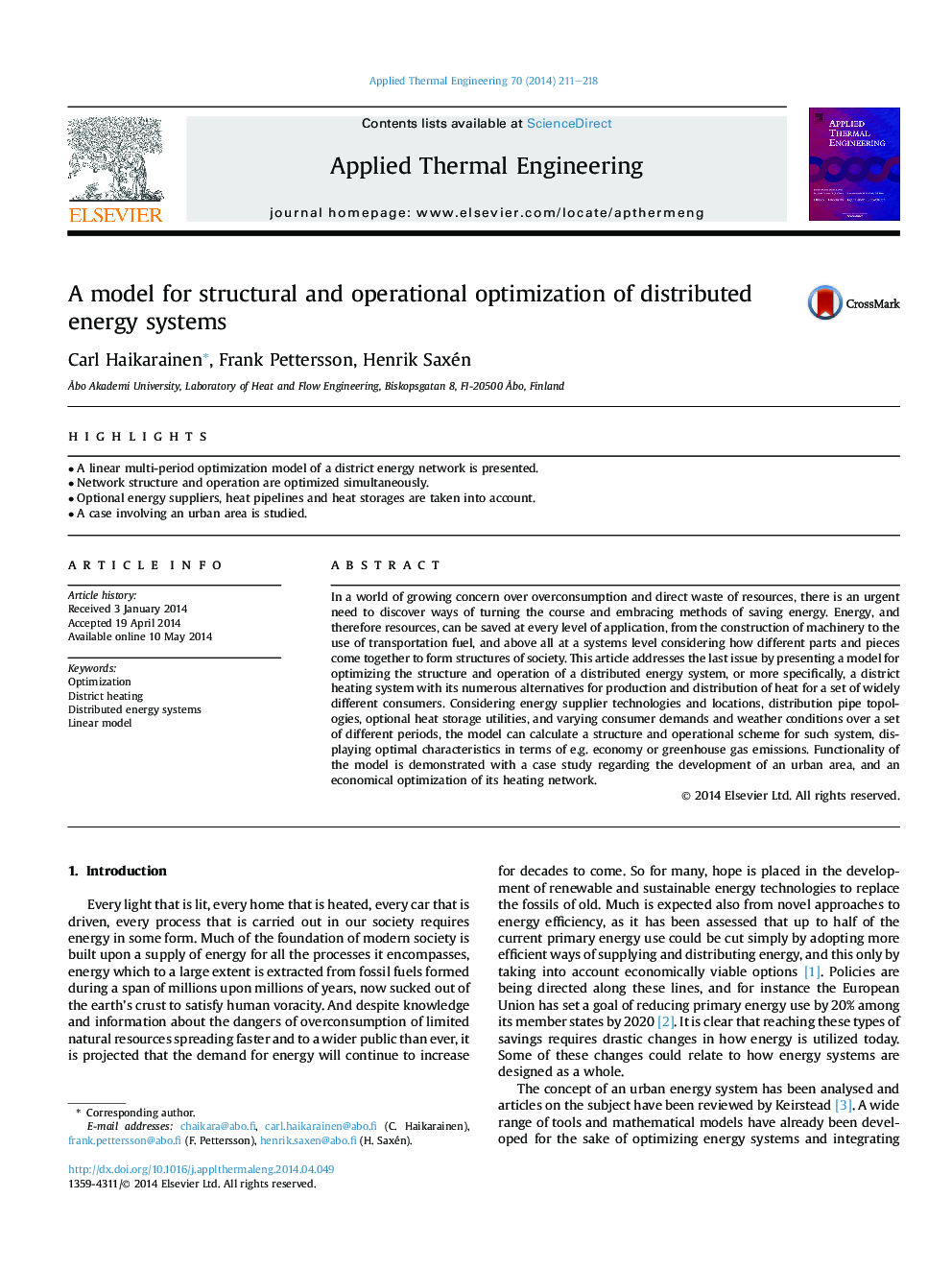| Article ID | Journal | Published Year | Pages | File Type |
|---|---|---|---|---|
| 646264 | Applied Thermal Engineering | 2014 | 8 Pages |
•A linear multi-period optimization model of a district energy network is presented.•Network structure and operation are optimized simultaneously.•Optional energy suppliers, heat pipelines and heat storages are taken into account.•A case involving an urban area is studied.
In a world of growing concern over overconsumption and direct waste of resources, there is an urgent need to discover ways of turning the course and embracing methods of saving energy. Energy, and therefore resources, can be saved at every level of application, from the construction of machinery to the use of transportation fuel, and above all at a systems level considering how different parts and pieces come together to form structures of society. This article addresses the last issue by presenting a model for optimizing the structure and operation of a distributed energy system, or more specifically, a district heating system with its numerous alternatives for production and distribution of heat for a set of widely different consumers. Considering energy supplier technologies and locations, distribution pipe topologies, optional heat storage utilities, and varying consumer demands and weather conditions over a set of different periods, the model can calculate a structure and operational scheme for such system, displaying optimal characteristics in terms of e.g. economy or greenhouse gas emissions. Functionality of the model is demonstrated with a case study regarding the development of an urban area, and an economical optimization of its heating network.
